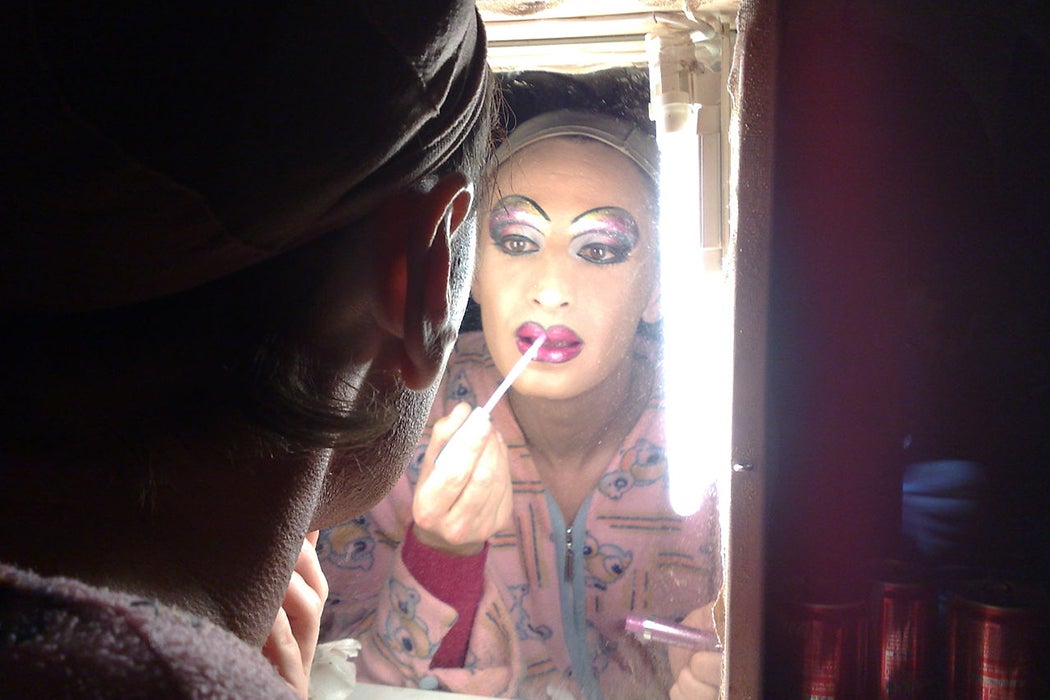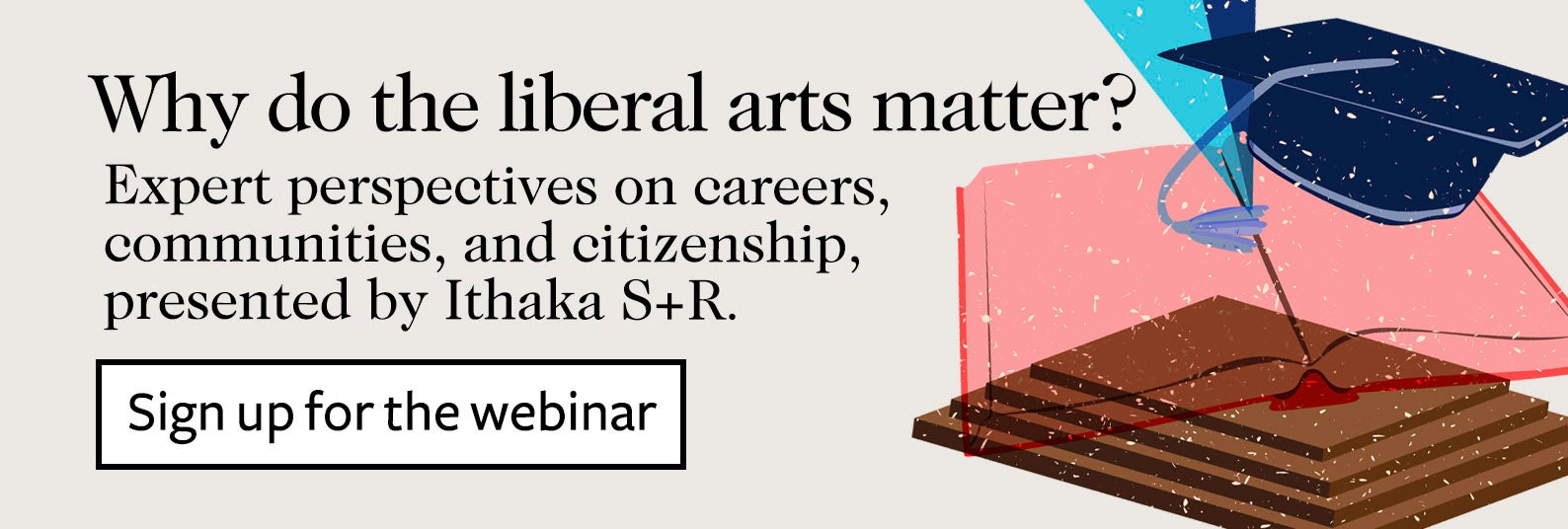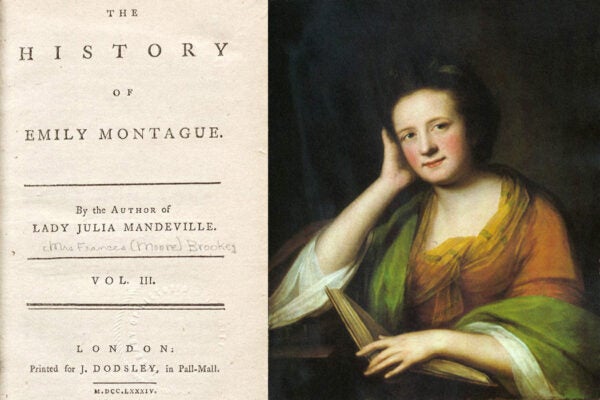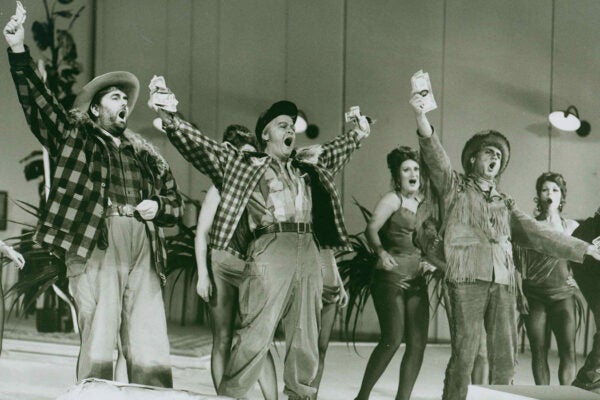Not so long ago, there was a oppressed tribe of people, scattered throughout a larger population, whose very existence was seen as so taboo, so immoral, so illegal, they had to invent their own language to talk with each other, hidden in plain sight. This emerging secret code was not only how they could find each other and show they belonged to the same subculture. It was also a very necessary cloak of protection against public discovery from people who were outside the group. Because on the other side of that lay the real threat of not just discrimination, but ostracization from good society, the loss of livelihoods, and even imprisonment or death.
The Need for a Secret Language
This was the fraught experience for many gay men, lesbians, and others who identified as queer during a time when same-sex sex was a crime. Equal rights issues are still far from resolved, even in countries where it’s long been decriminalized. In those places in the world where it’s still socially unacceptable or a capital crime, punishable by death, innovative language use in queer communities is not an in-joke or a bit of fun—it might be a key survival tactic.
Audio brought to you by curio.io
Polari (or Parlary, Palarie, as it’s also known, from the Italian “to talk”) is one lost language from Britain that became primarily associated with gay men (and to a lesser extent with lesbians). Its rich, rollicking, madcap patchwork linguistics was cobbled out of the threads of the secret “anti-languages” used by subcultures on the very edges of society, the low slang used by thieves, itinerant sailors, fishmongers, travelling circus performers, beggars, prostitutes, and (of course) theater people. Seemingly a linguistic home to everyone from everywhere, it creatively mixed in elements from Elizabethan thieves’ cant, the Italian-influenced carnival speech Parlyaree, Cockney rhyming slang, backwards slang, Yiddish, and Lingua Franca, the sailors’ argot.
Here’s David Bowie having a go at using it in his 2016 release of “Girl Loves Me” (and if you want to vada a translation, luckily there’s a bona app for that):
Cheena so sound, so titty up this Malchick, say
Party up moodge, nanti vellocet round on Tuesday
Real bad dizzy snatch making all the omies mad, Thursday
Popo blind to the polly in the hole by Friday
According to Paul Baker, foremost linguistic expert in Polari, this secret language, far from being a colorful fad that just fell out of fashion (before being cryptically revived by Bowie) was vital to the many gay men who used it to communicate with each other under the radar—at least until homosexuality stopped being a crime in the late sixties, rendering the secret language somewhat obsolete. (It was also no longer so secret, particularly after it appeared on radio, popularized by two very campy comedians).
The effects of Polari still linger on in mainstream English, in British slang words such as “naff,” “blag,” “scarper,” which is no mean feat for a secret language virtually nobody knows anymore. And that’s the surprising thing. This happens a lot with language created by marginalized groups such as the gay community.
As these initially secret linguistic codes grew richer, celebrating a fractured, hidden subculture and its vibrant aesthetics, they slowly bled their way into the very same mainstream that didn’t want them to exist, exerting a major linguistic influence on pop culture. Many contemporary memes and slang terms in mainstream pop culture such as “yas Queen” and “throwing shade,” for example, were appropriated from the unique linguistic practices of the queer community, often coined decades before. It’s a phenomenon that seems to replicate across different cultures, such as Bahasa Gay, a gay speech style of Indonesia, which has made its way into mainstream Indonesian life without the public being particularly aware that gay people even exist. How does this happen?
The spreading of these sorts of gay speech styles might be thanks to drag queens and other queer performers. The above clip for example, from 1938’s screwball comedy Bringing Up Baby, shows what is probably the first appearance of the word “gay” with a decidedly queer, cross-dressing meaning in a mainstream movie. Ad libbed by the reputedly bisexual Cary Grant, mainstream audiences would not have understood the slang term, and it passed right under the nose of the Hays Office, which strictly enforced the censorship of such unspeakable things as homosexual references in film. It wasn’t until the Stonewall Riots of 1969 (in which drag queens played a prominent role) that this slang meaning of “gay” really took hold in mainstream English.
There were other ways that queer performers changed the language. Time to spill the tea on what we might call “camp” linguistics.
What is Camp?
Susan’s Sontag’s much celebrated 1964 essay “Notes on ‘Camp'” brought awareness to this hard-to-describe emerging aesthetic of over-the-top yet ironic theatricality, attributing it to gay culture. There is probably nothing more camp than a drag performance, for all its love of spectacle.
In fact, we probably have Polari to thank for the word “camp” itself. Though there’s no definitive agreement on the etymology of the word “camp”, it’s highly possible it has its basis in Polari, perhaps from the Italian word campare, which means making something, such as art, stand out. But also apt for those who live for campy anthems, is its primary meaning, to live, to survive. Others believe it may have come from French camper, “to portray or pose.”
Not everyone can agree on what counts as camp. As Sontag put it, “the ultimate Camp statement: it’s good because it’s awful,” is an artful juxtaposition which seems made for the avant-garde. Perhaps it’s a case of “you know it when you see it,” and camp definitely intends to be seen, consumed, and shared. But Sontag also threw a bit of shade at its origins, demurring that “one feels that if homosexuals hadn’t more or less invented Camp, someone else would.”
Would they have? I wonder. What other subculture would have the drive and the expressive urgency to develop something as frivolously influential as camp? On the one hand, you have a socially stigmatized subculture in hiding, at risk of public exposure and abuse and, on the other, that same community’s fervent desire for theatrical, socially confronting gender-bending self-expression. This is all bound together by a colorfully snarky linguistic code that enabled secrecy but also a purely linguistic playfulness and sharp wit, for example in rhyming words like “kiki,” “peer queer,” and “fag hag.” Smells like drag queen spirit. So how did campy drag queens, often marginalized even within the queer community as simply one-note entertainers, become such an important linguistic influence? It’s clear there’s a lot more to drag queen culture than just frivolity.
The Homophile Backlash
In 1950s Britain, men were still being imprisoned for consensual homosexual acts, numbering over a thousand by mid-decade, trapped by undercover cops posing as gay men.
Across the pond in America, it was no better. In the years following the chaotic second world war, what Craig M. Loftin calls the “age of anxiety,” women had experienced newfound freedoms as a central part of the workforce and masculinity was trying to find its way home. The powers that be were in a gender-confused, blaming mood. The hysterical McCarthyist hunt for reds under the bed eventually led to U.S. Senate hearings to weed out more lavender types from public life. Thousands of gay men and lesbians were purged from government agencies and the military, spied on, arrested, and severely penalized, their careers and futures destroyed.
Many LGBTQ people, especially in the more staid, white-collar middle class, decided that merging into the mainstream was the better part of valour, quietly passing as straight by eliminating any outrageous mannerisms or revealing language quirks that strayed from the commonplace, and advocating for eventual social acceptance through good behavior. This gender-conforming group, known as the homophile movement, directed their gender anxieties and anger toward more flamboyant members of the queer subculture who were out there in the open, giving the rest of them a fabulously bad name. They resented the too-obvious camp aesthetic of “swishes” (a sometime derogatory diss before Katy Perry got to it), men who played with gender identity by appropriating feminine characteristics, including campy, feminine speech patterns, as well as drag performers. The terms “fairy,” “nelly,” “queen,” and “faggot” were often used in the same negative way to refer to overtly effeminate men.
Different types of gayspeak across cultures and countries often use “she-ing”, feminizing people or objects by using feminine pronouns for example, sometimes as another way to hide taboo relationships from public view. Mocking, feminizing slang such as “Lucy Law” (for the police) and “Vera Vice” (for the vice squad) disrupt gender norms (though some have argued it also perpetuates misogyny). At any rate, this near-universal linguistic practice of gay cultures everywhere, along with other “swish” stereotypes, was strenuously rejected by the masculine-identified homophile movement of the 50s and 60s as a perversion of language as well as social norms.
One of the few prominent homophile magazines of the day, ONE, frequently featured anti-swish sentiments from their gay readers, which largely internalized public anxieties and prejudices about overt homosexual stereotypes: “The flaming faggot who swishes up Lexington Avenue in New York City screaming and calling attention to his eccentricities sets back homosexuality,” “I think that these people who call each other ‘she,’ etc., are sick,” and finally “STAMP OUT QUEENS!”
To visibly identify as “queer” at this time seemed not only highly reckless, it was potentially life-ruining. Basically, you wouldn’t have wanted to do what drag queens do best and look fishy in public. Abuse was directed at this often-stigmatized group not just by the suspicious public but their own queer community, using the same arguments and stereotypes to keep them in place.
Camp Goes Mainstream
And yet the swishes and the drag queens who dared to push for visibility were often the ones with the most to lose, not only because they were in the front lines of exposure, easily targeted during bar raids and riots. Swishes were very often from the lower working classes or African American and Latino. As drag queens, they were unusually free to perform other identities, not just of gender, but of race and class, as Rusty Barrett’s study on African-American drag queens in Texas shows. An African-American drag queen, such as the famous Lady Chablis in John Berendt’s Midnight in the Garden of Good and Evil, could expertly perform the mannerisms, language, and other stereotypes of an upper class white woman, a role that would otherwise be barred to her. Drag art certainly could make onlookers question their gender, race, and class assumptions, while immersing in a seamless performance of language and manner. And what better way to protect a private self than behind the safety of an over-the-top, ironic performance?
It was the radical spectacle of camp, increasingly enjoyed as a form of mainstream entertainment by a general audience, through the startling success of shows like RuPaul’s Drag Race, or popular polari-speaking camp comedians, cross-dressing actors, and musicians of the past, that edged once hidden elements of queer culture into the open and caused an explosion of neologisms to be adopted into mainstream pop culture. Often, those linguistic origins are lost as they’re picked up and shared more widely. Though the unique speech of drag queens emerged as a way to show belonging in a marginalized subculture, it may soon belong to a more mainstream audience who may not even be aware of its long, unspeakable history.






